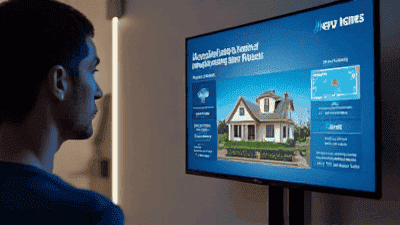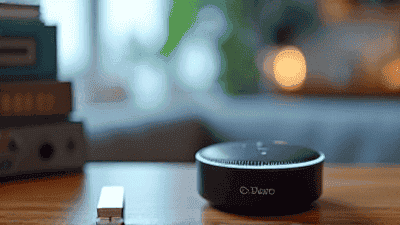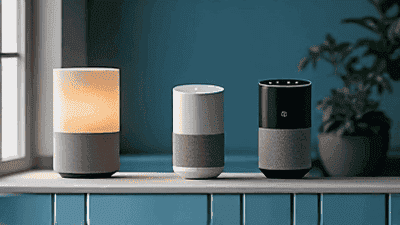
In the rapidly evolving world of technology, the concept of a smart home has transitioned from a futuristic idea to a tangible reality. Central to this transformation are voice assistants, which have become indispensable tools for managing and controlling smart home devices. These assistants, powered by artificial intelligence, offer a hands-free, intuitive way to interact with your home’s technology, making everyday tasks more convenient and efficient.
Voice assistants, such as Amazon’s Alexa, Google Assistant, and Apple’s Siri, have revolutionized the way we interact with technology. By using natural language processing and voice recognition, these assistants allow users to perform tasks, access information, and control devices with simple voice commands. In the context of smart homes, voice assistants act as the central hub, enabling users to manage a wide range of devices and systems effortlessly.
One of the primary reasons voice assistants have become so popular is their convenience. Users can perform tasks without needing to physically interact with devices or navigate complex menus. For example, you can turn on the lights, adjust the thermostat, or lock the doors simply by speaking a command.
Voice assistants are designed to integrate seamlessly with a variety of smart home devices, including lights, thermostats, security cameras, and appliances. This interoperability allows users to control their entire home ecosystem from a single platform, creating a cohesive and efficient experience.
Modern voice assistants are equipped with machine learning capabilities that allow them to adapt to users’ preferences and routines. Over time, they can learn your habits and provide personalized recommendations, such as suggesting the ideal temperature for your home or reminding you to lock the doors at night.
Voice assistants enable hands-free control of your smart home, which is particularly useful when your hands are occupied or when you’re multitasking. For example, you can adjust the thermostat while cooking or turn off the lights from the comfort of your bed.
Voice assistants make technology more accessible for individuals with disabilities or mobility issues. By enabling voice control, they provide an alternative to traditional methods of interaction, empowering users to manage their homes independently.

Several voice assistants dominate the smart home market, each offering unique features and capabilities. Here’s a closer look at the most popular options:
Amazon’s Alexa is one of the most widely used voice assistants in smart homes. It is compatible with a vast array of smart devices and offers a user-friendly interface through the Alexa app. Key features include:
Google Assistant is another leading voice assistant known for its powerful search capabilities and integration with Google services. Key features include:
Apple’s Siri is the voice assistant for the Apple ecosystem, offering seamless integration with iPhone, iPad, Mac, and HomePod devices. Key features include:
The true power of voice assistants lies in their ability to integrate with and control a wide range of smart home devices. Here are some key areas where voice assistants can enhance your home experience:
Voice assistants allow you to control smart lighting systems with ease. You can turn lights on or off, dim them, or change their color using simple voice commands. Popular smart lighting options include:
Voice assistants can manage your home’s heating, ventilation, and air conditioning (HVAC) systems through smart thermostats. Popular options include:
Voice assistants can integrate with various security devices to enhance your home’s safety. Examples include:
Voice assistants can control your home entertainment systems, including TVs, sound systems, and streaming devices. Popular integrations include:
Voice assistants can also control a variety of smart appliances, making daily tasks more convenient. Examples include:

To fully leverage the potential of voice assistants in your smart home, it’s important to create a seamless experience where all devices work together harmoniously. Here are some tips for achieving this:
When selecting smart home devices, ensure they are compatible with your chosen voice assistant. Most devices will specify which platforms they support, so check for integration with Alexa, Google Assistant, or Siri.
Take advantage of routines and automations offered by your voice assistant to streamline daily tasks. For example, you can create a “Goodnight” routine that turns off the lights, locks the doors, and sets the thermostat to your preferred sleep temperature.
Most voice assistants have companion apps that allow you to control and monitor your smart home devices from one place. Familiarize yourself with these apps to manage settings, create automations, and troubleshoot issues.
Place your voice assistant devices strategically to ensure they can hear your commands clearly from anywhere in the room. For example, position an Echo device centrally in your living room or place a Google Nest Hub in your kitchen for hands-free cooking assistance.
If your voice assistant supports voice match or multi-user profiles, set these up to personalize the experience for each household member. This ensures that each user gets tailored responses and access to their own accounts.
Keep your voice assistant and smart home devices updated with the latest firmware and software. Updates often include new features, improved performance, and enhanced security.
A reliable Wi-Fi connection is essential for voice assistants and smart home devices to function properly. Invest in a quality router and consider using mesh Wi-Fi systems for larger homes to ensure consistent coverage.
While voice assistants offer numerous benefits, it’s important to be mindful of privacy and security concerns. Here are some steps to protect your data:
Most voice assistants allow you to review and adjust privacy settings, such as voice recordings and data sharing. Regularly check these settings to ensure you’re comfortable with the level of data being collected.
Enable two-factor authentication for your voice assistant and smart home accounts to add an extra layer of security.
Regularly review the devices connected to your voice assistant and remove any that are no longer in use or that you don’t recognize.
If your voice assistant device has a physical switch or button to disable the microphone, use it when privacy is a concern.
Ensure your voice assistant and smart home devices are running the latest software updates, as these often include security patches.

Voice assistants have become integral to the modern smart home, offering unparalleled convenience, control, and personalization. By integrating these assistants with a variety of smart devices, you can create a seamless and efficient experience that enhances your daily life. Whether you’re adjusting the lighting, managing your home’s climate, or controlling your entertainment system, voice assistants make it easy to interact with your smart home ecosystem. By choosing compatible devices, setting up routines, and prioritizing privacy, you can fully harness the power of voice assistants to transform your home into a true smart home.